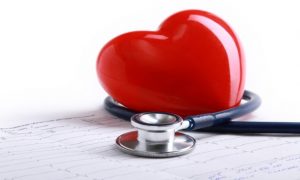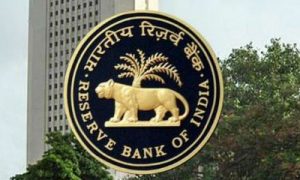World Heart Day 2022: At times it’s difficult to ascertain if one is having a heart attack or panic attack as many symptoms of the two conditions overlap with each other. Cardiologists explain the difference between the two.
World Heart Day 2022: Panic attack may seem like a heart attack at times as it shares some of its symptoms with heart attack be it chest pain, increase in heart rate or shortness of breath. However, one can differentiate between the two keeping in mind the location of pain and the duration of symptoms. Experts say patient must be given immediate medical attention as one can never be sure if it isn’t a heart attack.
The cases of both heart attack and panic attack are increasing in the wake of Covid pandemic as weakening of heart muscles and anxiety issues are becoming common post Covid. In such situations symptoms like shortness of breath, pain in chest, nausea, palpitations could make one confused if they are suffering from a heart attack or panic attack.
“We as doctors, all agree fervently that one should not take a chance of it not being a heart attack. And the reason is simple; sometimes it can be difficult to tell the difference,” says Dr Atul Mathur, Executive Director – Interventional Cardiology & Chief of Cath Lab, Fortis Escorts Heart Institute, Okhla road, New Delhi.
“Panic attacks occur when stress hormones trigger the body’s “fight or flight” response, often resulting in fast heartbeats, tightness in chest, chest pain and breathlessness. In the case of a heart attack, a blockage in a coronary artery may show the same symptoms. Chest pain, rapid heartbeat and shortness of breath may be a result of insufficient amount of blood reaching the heart muscle, says Dr Dhaval Naik, Heart Transplant Surgeon, Marengo CIMS Hospital.
“A panic attack patient might have some factors like anxiety or stress related to family/job where is the heart attack patients usually tend not to have this kind of stress, they are more often seen in panic attacks,” says Dr Sunil Kumar Wadhwa, Principal Consultant Cardiology, Max Hospital Gurugram.
WHAT IS A HEART ATTACK
Dr. Atul Mathur says heart attacks can be sudden and intense, but mostly start slowly, with mild chest pain or discomfort which progressively worsens over few minutes. Dr Mathur says these episodes might come and go several times before actual intensive heart attack occurs.
“When blood flow to the heart muscles is reduced severely or completely obstructed, it results in heart attack. The typical symptoms are chest discomfort beneath the breastbone, discomfort radiating to the neck, jaw, or upper arm, shortness of breath, light headedness, fatigue, feeling of doom or dying, nausea, palpitations and sweating. Risk factors of the heart attack are diabetes mellitus, high blood pressure, high cholesterol levels and sedentary lifestyle,” says Dr Mathur.
WHAT IS A PANIC ATTACK
Dr Mathur says that if the medical workup shows that you have a healthy heart, then you might be experiencing a panic attack – this is especially if the person is having intense fear, which is the hallmark symptom.
“Panic attack is the flight or fright response, an alarm system that has gone haywire. These attacks come fast and generally peak in intensity in about 10 minutes. Also the attacks are triggered by a traumatic events or major stress in life; in some conditions it may happen without any apparent reason,” says Dr Mathur.
“The symptoms can be intense fear and racing thoughts, feeling of losing control, fear of dying, feeling of detachment from surroundings, racing heart or palpitations, chest discomfort, choking sensation, nausea, shortness of breath or rapid breathing, numbness or tingling, feeling hot or cold, dizziness or light headedness,” adds the cardiologist.
DIFFERENCE BETWEEN HEART ATTACK AND PANIC ATTACK
In heart attack, the pain is classically felt below breastbone as a dull pressure. It may radiate up to neck and jaw or down the left arm.
“It is a vague pain and one cannot specifically locate with the tip of finger. If you are able to localise the pain with finger it is unlikely to be from the heart.
Panic attacks, on the other hand, may cause chest pain with a sharp or stabbing sensation, or a choking sensation in the throat. One should however ‘never ignore chest pain’,” says Dr Mathur.
Dr Wadhwa says both the patients of panic attacks as well as heart attacks can have difficulty in breathing but it is seen that patients with panic attacks over-breathe where is the patient of heart attack do not over-breathe.
“Patients with panic attacks can have cold sweats like sweating on the palm or sweating in sole of their feet Which is less common in case of heart attack patients. A patient with heart attacks may have some associated symptoms like vomiting, whereas the patients of panic attacks may have shaky hands because they are constantly under stress,” adds Dr Wadhwa.
“One of the key differences between these two conditions is that a heart attack often develops during physical exertion, whereas a panic attack can occur at rest. A heart attack is more likely to develop when the workload of the heart increases, for example while a person is exercising or gymming or running up the stairs, more in people who do not engage in physical exertion on a daily basis. Panic attacks can start randomly or be triggered by psychological distress. For example, some people experience panic attacks suddenly, and others may have panic attack symptoms when faced with a phobia, like claustrophobia or a fear of heights or when a person is deeply shocked by something,” says Dr Naik.
Here are other differences between heart attack and panic attack according to Dr Mathur:
ASSOCIATED SYMPTOMS
Heart attacks may also be accompanied by fatigue, fainting, or loss of consciousness. Panic attacks, on the other hand, are characterized by racing heart, racing thoughts, trembling, tingling or numbness, and a choking sensation.
DURATION OF SYMPTOMS
Heart pain lasts longer than few minutes and may come and go. It may be brought on or worsened by physical exertion. During a panic attack, on the other hand, symptoms typically peak in intensity after about 10 minutes, and subside after half an hour.
TRIGGERS
Any chest discomfort that is triggered by exertion should not be taken lightly and immediate physician consultation should be sorted out. Panic attacks can start randomly or be triggered by psychological distress. For example, some people experience panic attacks out of the blue and others may have panic attack symptoms when faced with a phobia, like claustrophobia or a fear of heights.
PREVENTION
Dr. Ashish Jai Kishan, Consultant, Interventional Cardiology, Fortis Escorts Heart Institute shares prevention tips for heart attack and panic attack.
Prevention of heart attack includes controlling risk factors like high blood pressure and high cholesterol, avoiding cigarette smoking and alcohol, eating a healthy diet, and living an active lifestyle.
Prevention of panic attack includes controlling of stress and anxiety, introducing exercise, and medications. Attention needs to be given to the mental health.





































